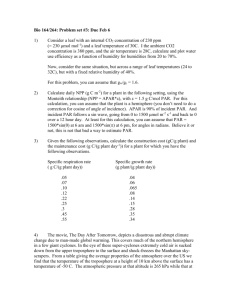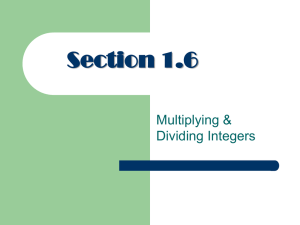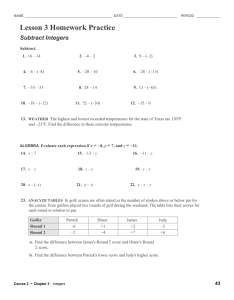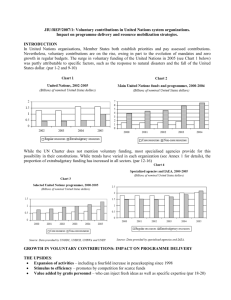Satellite Ocean Primary Production in the Chesapeake Bay Region
advertisement
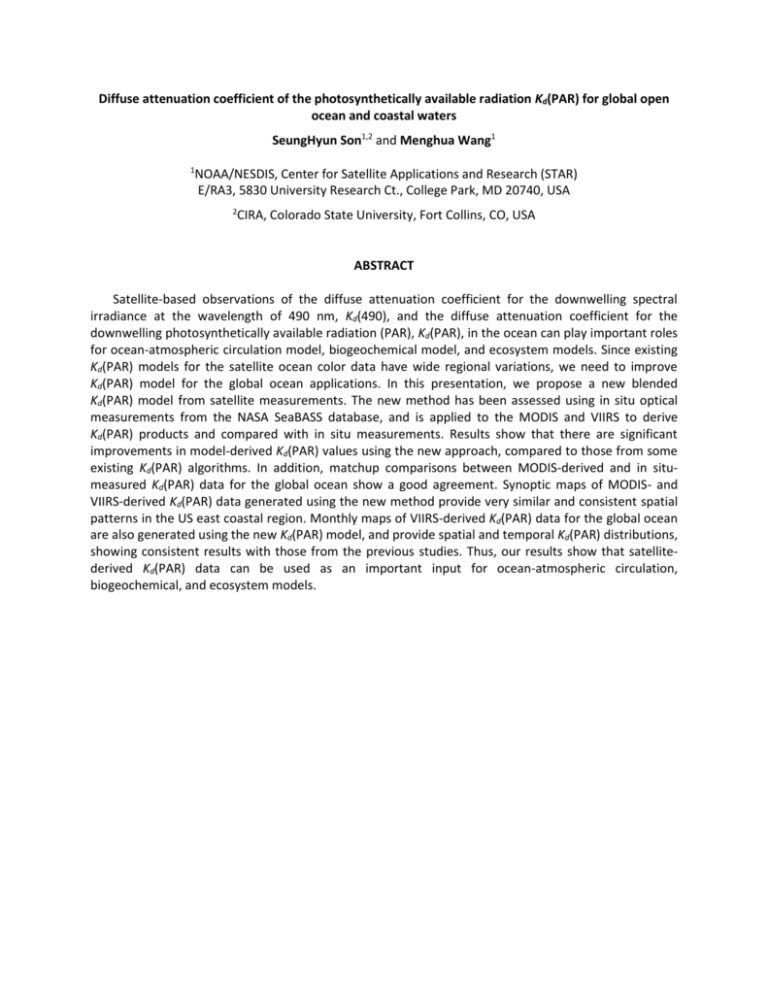
Diffuse attenuation coefficient of the photosynthetically available radiation Kd(PAR) for global open ocean and coastal waters SeungHyun Son1,2 and Menghua Wang1 1 NOAA/NESDIS, Center for Satellite Applications and Research (STAR) E/RA3, 5830 University Research Ct., College Park, MD 20740, USA 2 CIRA, Colorado State University, Fort Collins, CO, USA ABSTRACT Satellite-based observations of the diffuse attenuation coefficient for the downwelling spectral irradiance at the wavelength of 490 nm, Kd(490), and the diffuse attenuation coefficient for the downwelling photosynthetically available radiation (PAR), Kd(PAR), in the ocean can play important roles for ocean-atmospheric circulation model, biogeochemical model, and ecosystem models. Since existing Kd(PAR) models for the satellite ocean color data have wide regional variations, we need to improve Kd(PAR) model for the global ocean applications. In this presentation, we propose a new blended Kd(PAR) model from satellite measurements. The new method has been assessed using in situ optical measurements from the NASA SeaBASS database, and is applied to the MODIS and VIIRS to derive Kd(PAR) products and compared with in situ measurements. Results show that there are significant improvements in model-derived Kd(PAR) values using the new approach, compared to those from some existing Kd(PAR) algorithms. In addition, matchup comparisons between MODIS-derived and in situmeasured Kd(PAR) data for the global ocean show a good agreement. Synoptic maps of MODIS- and VIIRS-derived Kd(PAR) data generated using the new method provide very similar and consistent spatial patterns in the US east coastal region. Monthly maps of VIIRS-derived Kd(PAR) data for the global ocean are also generated using the new Kd(PAR) model, and provide spatial and temporal Kd(PAR) distributions, showing consistent results with those from the previous studies. Thus, our results show that satellitederived Kd(PAR) data can be used as an important input for ocean-atmospheric circulation, biogeochemical, and ecosystem models.






